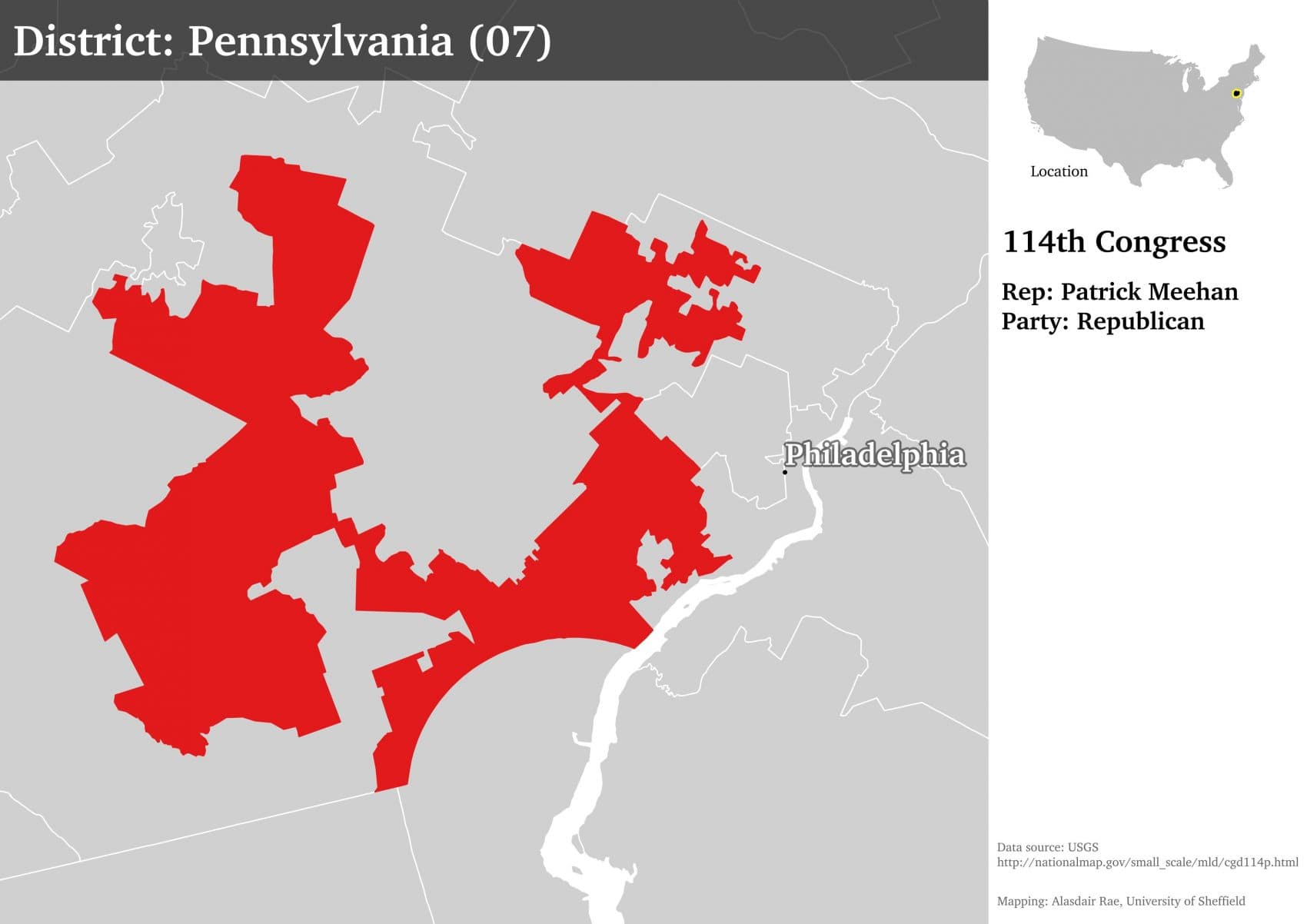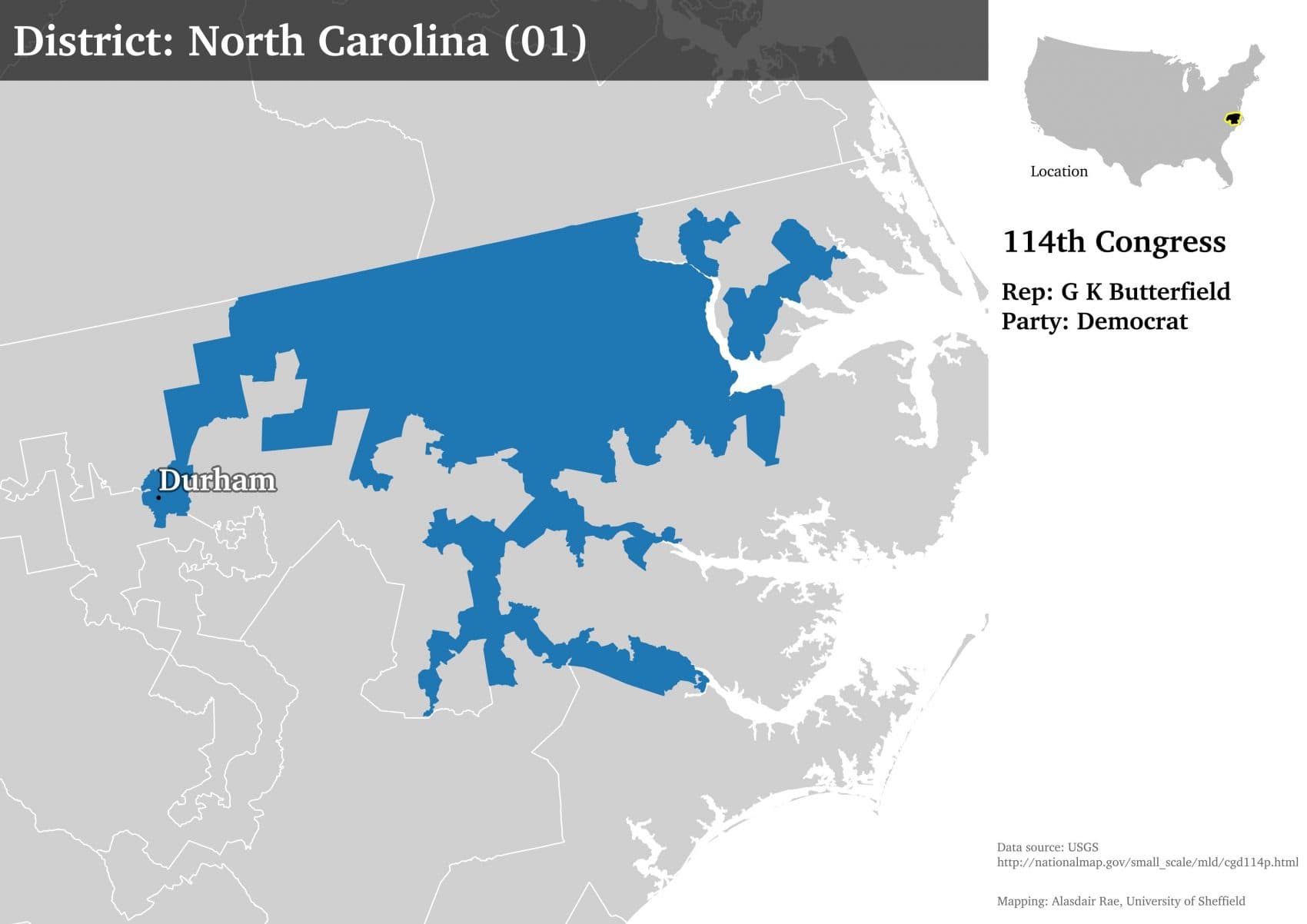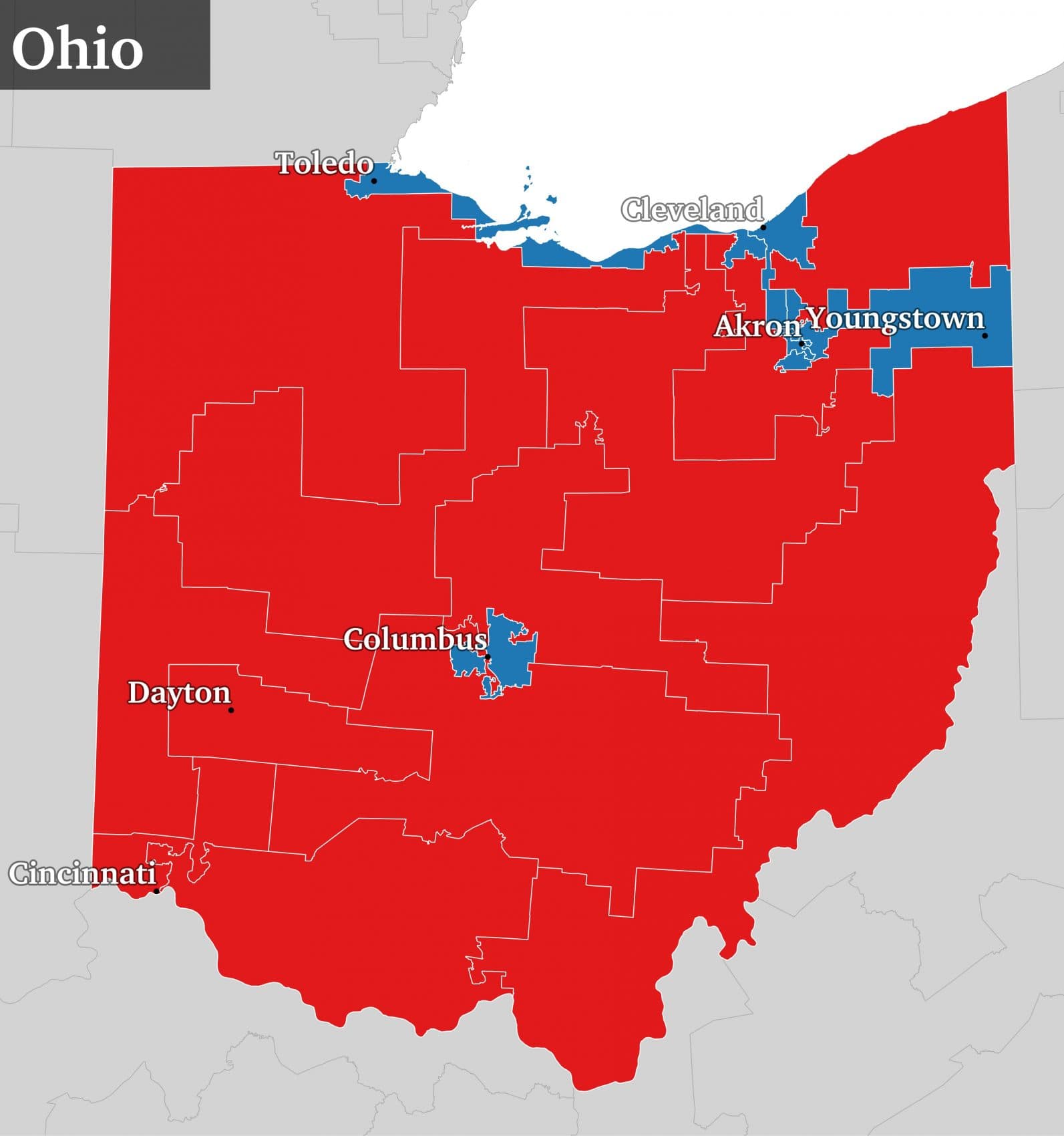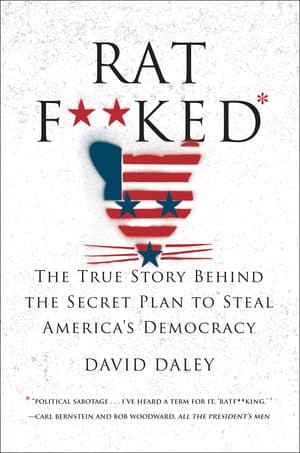Advertisement
'Gerrymandering On Steroids': How Republicans Stacked The Nation's Statehouses
Resume
It was never a secret. In 2010, the conservative political strategist Karl Rove took to the Wall Street Journal and laid out a plan to win majorities in state legislatures across the country.
"He who controls redistricting can control Congress," read the subhead to Rove's column.
The plan, which its architects dubbed REDMAP for Redistricting Majority Project, hinged on the fact that states redraw their electoral maps every 10 years according to new Census data. REDMAP targeted states where just a few statehouse seats could shift the balance to Republican control in the crucial Census year of 2010.
That plan worked spectacularly. It's why today Republicans have a majority in nearly two-thirds of the country's state legislative chambers. And it's why in 2012 Democratic statehouse candidates won 51 percent of the vote in Pennsylvania, which voted for Barack Obama in the presidential election, yet those candidates ended up with only 28 percent of the seats in the legislature.
Here & Now's Robin Young learns how this happened from David Daley, editor-in-chief of Salon and the author of "Ratf**ked: The True Story Behind the Secret Plan to Steal America's Democracy."
Interview Highlights: David Daley
On what gerrymandering means:
"Gerrymandering is the word that put us all to sleep in eighth grade civics class, but it is the most important factor in the building blocks of our democracy, which is how the lines are drawn in our legislative districts. Politicians on both sides do it in order to get revenge on an enemy, maybe steal a seat here and there where they didn't deserve it. Gerrymandering changes in 2010. What the Republicans hit upon is a brilliant new plan to put gerrymandering on steroids, and build themselves a voter-proof firewall and it holds up in 2012, as you said."
On what the Red Map Project was:
“The Democrats cleaned the Republicans clocks in 2008. Republicans get depressed. One day, Chris Jankowski is reading a story in the New York Times, and he realizes, wait: 2010 is a zero year. My party is on the out now, but historically the party on the out does better in midterm elections, and Jankowski is a state government guy. He runs something called the Republican State Leadership Committee, so he understands how redistricting works at the state level. What he also understands is that there are 18 state legislative chambers in the country that the margin of control is so close that it's four votes or fewer. So he says, "Hey, it wouldn't cost me a whole lot of money to try to flip four or five legislative districts in these states.' So they go into Pennsylvania.”
“The Democrats lose the Pennsylvania House. They lose the governor's race that year, and they do not have a seat at the table when it comes to redistricting. So the maps that the Republicans draw are water-tight. And they hold up in 2012.”
“The Republicans spent $30 million on this and they were able to build themselves a firewall, a full Chamber of Congress for a decade, for less than the price of a losing Senate race in a small state.”
On the effect of the Red Map Project:
“Yes. The first piece of what the Republicans do with the gerrymander essentially happens in the 1990s, and this is when they use the Voting Rights Act to create majority-minority seats in Southern states. The only way to do in many of these states is to pack as many Democratic voters as you can into one district. These voters do elect African-Americans to Congress, and what you see, starting in mid-1990s is the highest level of African-American representation in Congress of anytime since Reconstruction. But it also has another impact. It turns all of the other neighboring districts more Republican.”
“I don't have any problem with the Republicans winning when they win. The problem comes in when you have states like Pennsylvania in which Democrats get more votes and Republicans take 13 of the 18 seats. Or a state like Ohio, which is the bellwether state that keeps us all up on election night, a 50-50 state. The Republicans have 12 of the 16 seats. So, this is about being sure that elections matter, and that the side getting the most votes wins. And this is the difference between the gerrymander that happens in 2010 and any other gerrymander.”
On getting an outside commission to do redistricting:
"We are the only democracy in the world that allows the politicians to draw their own lines and essentially choose their own voters. When a nonpartisan commission is on the ballot, whether this a red state, or a blue state, or a purple state. In Ohio, Arizona, Florida, California. They always say yes. We want to take this out of the hands of the politicians. But the politicians, because they understand how important it is, are really reluctant to let go of this power. Even sometimes in states where nonpartisan commissions have been put into place, the politicians have found a way to worm their way into them."
More On Gerrymandered Electoral Districts



Book Excerpt: 'Ratf**ked'

Wearing a resplendent red tie, the color of the Republican Party, Barack Obama delivered his victory speech on November 4, 2008. The nation’s first African American first family joined him, celebrating together the historic evening. Watch Obama’s Grant Park speech eight years later, and it’s not only his youth and the jubilant throngs that make the moment so electrifying. It’s that sense of post-partisan possibilities that matched Obama’s carefully chosen metaphor. “If there is anyone out there,” Obama told the nation, “who still wonders if the dream of our Founders is alive in our time, who still questions the power of our democracy, tonight is your answer.”
As it turned out, Obama captured Republican stronghold after stronghold that early November evening. Down South, he picked off North Carolina and Virginia. In the Midwest, he grabbed Indiana. He won the two states where Democratic dreams had died hard in 2000 and 2004—Florida and Ohio—then added Colorado and Nevada for good measure, conjuring liberals’ visions of a future western majority. As polls closed late in Oregon, Alaska and Minnesota, and Republican incumbents went down, pundits, professors and politicians marveled at the new Democratic supermajority in the Senate and spoke of emerging—even unbreakable—coalitions. On television and on the front pages of newspapers, they openly questioned how the GOP would survive to the next election.
“The question now becomes what is the future of the Republican party nationally,” wondered one political science professor in the New York Times. The mood turned grim on Fox News, where Bill O’Reilly bemoaned, “Barack Obama is a star. . . . The Republicans have, who? Sarah Palin?” Conservative radio host Laura Ingraham bluntly called the Republican beatdown well deserved. “We’ve seen a lack of competence at every level of government, frankly, under Republican rule,” she opined.
“It’s a party adrift. It’s a party lost,” added longtime Republican communications adviser Torie Clarke on ABC News. Over on CNN, Wolf Blitzer and John King peered deeper into the blue map and found suburban Pennsylvania counties, like Bucks, Montgomery and Chester—previously reliable for George W. Bush—now tipping toward Obama by double digits. “If you are the Republicans looking at this map this morning,” observed King, “you are very troubled.”
One of those concerned conservatives, Rich Lowry, the editor of William F. Buckley’s National Review, didn’t like what he saw either in swing states such as Pennsylvania, Ohio, North Carolina, Wisconsin and Virginia. “It’s a bad thing for the Republicans when you drill down into these states,” he said.
“It’s like, where did all the Republicans go? Did they all move to Utah?”
The 2008 election looked like a transformative moment, a wave election that announced an ascendant new movement. Even the brightest conservative thinkers thought it signaled danger for the GOP. And it might have. What no one knew—not even despairing Republicans eyeing Fox News through a fuzzy third-cocktail haze—was that the truly transformative election was two years away. It would not be celebrated live around the world from a Grant Park awash in klieg lights, but in VFW halls and Holiday Inn ballrooms and strip-mall party headquarters as hundreds of new Republican state legislators claimed victories—in those very states Lowry feared were lost forever.
This is the story of the audacious Republican plan which not only penned in the Obama presidency but managed, in spite of jubilant 2008 Democratic expectations, to create supermajorities for conservative policies in otherwise blue and purple states. This is the story of the actual redrawing of the American political map and of our democracy itself. It’s the story of how Republicans turned a looming demographic disaster into legislative majorities so unbreakable, so impregnable, that none of the outcomes are in doubt until after the 2020 census. It is the story of new mapping technologies so exact that they’ve re-sorted and resegregated Americans, while creating congressional districts where the only competition comes from someone more extreme.
It’s legal, it’s breathtaking, and much of it happened in plain sight. The Democratic majority was ratfucked.
In politics, a “ratfuck” is a dirty deed done dirt cheap. You can trace the term back as far as Edmund Wilson’s The Twenties. It was used decades later in All the President’s Men, the story of how Washington Post reporters Bob Woodward and Carl Bernstein uncovered the Watergate scandal and brought about the resignation of Richard Nixon. They quoted Donald Segretti, an operative tied to Nixon’s reelection campaign, as using the colorful term to describe political sabotage and the early shenanigans of seamy strategists linked to the burglars who bungled the Watergate break-in. The operatives who quite legally changed the complexion of Congress worked in a far more sophisticated fashion.
This twenty-first-century version begins in 2009, when Chris Jankowski awoke on July 22 at his Richmond home still feeling kicked in the gut by the election results. He sat down with the morning New York Times, and buried inside a story about state legislatures and census projections he read something that snapped him back to action. After reading past a downcast first sentence whose truth he knew far too well—“Republicans in search of good news these days have had to rely on bad news for the White House”—Jankowski found this, by Times correspondent Adam Nagourney:
2010 is not just any election year: it is crucial given that this class of governors will be in charge as their states draw Congressional and state legislative districts as part of the reapportionment process after the next census. And given historical trends in midterm elections and the lopsided majority Democrats enjoy in Congress, the possibility that Republicans could make gains in House races next year could give the party a psychological boost at the halfway point of Mr. Obama’s term.
Jankowski immediately recognized the opportunity. As provided in the Constitution, every state redraws all of its district lines every ten years, that is, after the census. That means elections in “zero years” matter more than others. Jankowski realized it would be possible to target states where the legislature is in charge of redistricting, flip as many chambers as possible, take control of the process, and redraw the lines. Boom. Just like that—if Republicans could pull it off—the GOP would go from demographically challenged to the catbird seat for a decade. At least.
As one of the leading tacticians behind the Republican State Leadership Committee, Jankowski has few peers as a strategist, even if Karl Rove and Frank Luntz then vacuumed up all the TV airtime. State government has always been his passion. He had spent years trying to arm-twist GOP strategists and donors to spend more time and money on down-ballot races: state houses, state attorneys general, local judges. Those might not be the sexy elections to invest in—no wealthy player feels like a kingmaker or a Koch brother by writing a check to the Republican running for state representative in Pennsylvania’s 130th—but he proved time and again that they often provided the best value. Donations that would be a mere drop in the bucket to a presidential or Senate candidate might make all the difference at the local level. And policy outcomes, he would readily discern, could actually be influenced in state capitals—unlike in gridlocked Washington, DC.
It’s hard to believe, but the lightbulb moment that would reshape American politics came almost immediately over a breakfast with the supposedly liberal New York Times: Republicans should mount an aggressive campaign to flip state legislatures ahead of post-census redistricting, then press the advantage to both redraw congressional and state legislative lines in their favor and aggressively advance the conservative agenda. Presidents almost always lose seats in a midterm election. Democratic turnout always falls in non-presidential years. Smart money spent on the right races had the potential to make more of a difference than ever.
Republican operatives would use the oldest trick in the book—the gerrymander—but in a brilliant and totally modern way.
“I read it and I thought we could do this,” Jankowski told me. “I know those state legislators. I know who’s going to be the speaker in Pennsylvania if we get the majority. We should do this. This will make our guys happy. I can go to these guys in the legislature and say, hey, we’ve been struggling for years to try and help you guys compete. I think we can get millions—and you don’t have to do anything other than what you were going to do anyway.”
Jankowski was right, and the race was on. In short order, the RSLC would call the plan REDMAP—for Redistricting Majority Project—a name which also described its very elegant goal. These strategists would turn the electoral map bright red. Jankowski took the lead as executive director.
By the time election 2010 heated up, two big things had already changed since the swooning that marked Obama’s victorious evening in Grant Park. First, that January, the Supreme Court issued its Citizens United verdict, tossing out the ban on independent political expenditures by corporations as an unconstitutional breach of free speech. In a 5-to-4 decision, rendered on January 21, 2010, the court’s five conservatives ruled that corporations and unions had a permanent green light to spend essentially as much money as they wished. Super PACs and other tax-exempt nonprofit political groups could now raise and spend unlimited amounts, much of it “dark money” impossible to trace back to the donor.
President Obama found the ruling so antithetical to democracy that he took the rare step of criticizing it, harshly, during his State of the Union speech six days later, which was attended, awkwardly, by six of the nine justices. But Citizens United was just the continuation of Obama’s political nightmare. A Republican, Scott Brown, improbably captured the late Ted Kennedy’s Senate seat, erasing the Democratic supermajority in the Senate. Obama’s push for universal health care descended into a debate over “death panels,” creating a summer of ugly town hall meetings for Democrats nationwide, and thereby speeding the rise of the Tea Party.
Jankowski didn’t see all of this coming that July morning, however. He just saw a way to get his side back into the game. Instantly, his post-election malaise began to fade.
“We were depressed as hell but we weren’t going to quit,” he confides.
Excerpted from "Ratf**ked: The True Story Behind the Secret Plan to Steal America's Democracy" by David Daley. Copyright © 2016 by David Daley. With permission of the publisher, Liveright Publishing Corporation. All rights reserved.
Guest
David Daley, editor-in-chief of Salon and the author of "Ratf**ked: The True Story Behind the Secret Plan to Steal America's Democracy." He tweets at @davedaley3.
This segment aired on July 19, 2016.